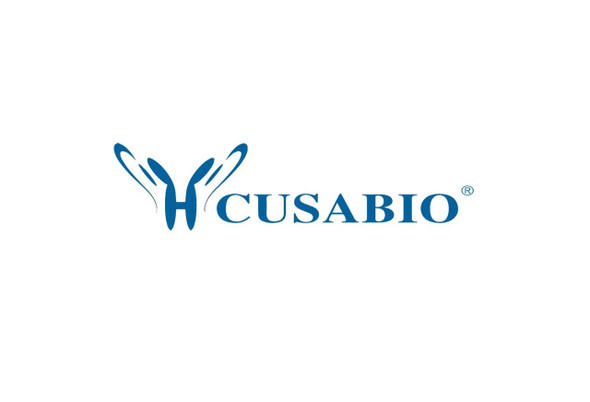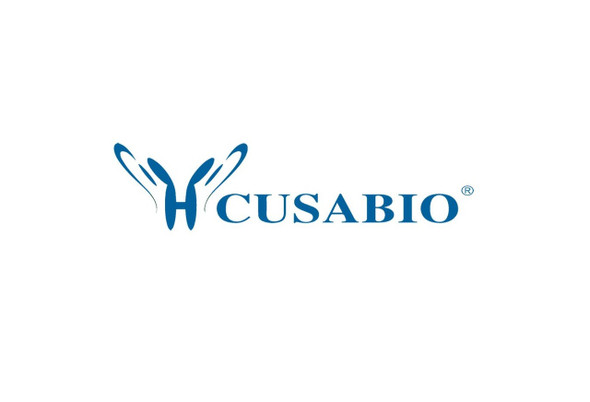Cusabio Virus & Bacteria Recombinants
Recombinant Kluyveromyces marxianus DNA-directed RNA polymerases I, II, and III subunit RPABC1 (RPB5) | CSB-EP889203KAN
- SKU:
- CSB-EP889203KAN
- Availability:
- 3 - 7 Working Days
Description
Recombinant Kluyveromyces marxianus DNA-directed RNA polymerases I, II, and III subunit RPABC1 (RPB5) | CSB-EP889203KAN | Cusabio
Alternative Name(s): RPB5; DNA-directed RNA polymerases I; II; and III subunit RPABC1; RNA polymerases I; II; and III subunit ABC1
Gene Names: RPB5
Research Areas: Epigenetics and Nuclear Signaling
Organism: Kluyveromyces marxianus (Yeast) (Candida kefyr)
AA Sequence: MDQEQERGISRLWRAFRTVKEMVRDRGYFITQEEIDLSLEDFKVKYCDSMGKPQRKMMSFQSNPTEESIEKFPEMGSLWVEFCDEASVGVKTMKNFVVHITEKNFQTGIFIYQSGITPSANKILPTAAPAVIETFPEASLVVNITHHELVPKHIRLSDAEKKELLKRYRLKESQLPRIQRMDPVALYLGLKRGEVIKIIRKSETSGRYASYRICL
Source: E.coli
Tag Info: N-terminal 6xHis-tagged
Expression Region: 1-215aa
Sequence Info: Full Length
MW: 29.0 kDa
Purity: Greater than 85% as determined by SDS-PAGE.
Relevance: DNA-dependent RNA polymerase catalyzes the transcription of DNA into RNA using the four ribonucleoside triphosphates as substrates. Common component of RNA polymerases I, II and III which synthesize ribosomal RNA precursors, mRNA precursors and many functional non-coding RNAs, and small RNAs, such as 5S rRNA and tRNAs, respectively. Pol II is the central component of the basal RNA polymerase II transcription machinery. Pols are composed of mobile elements that move relative to each other. In Pol II, RPB5 is part of the lower jaw surrounding the central large cleft and thought to grab the incoming DNA template. Seems to be the major component in this process
Reference: "Kluyveromyces marxianus exhibits an ancestral Saccharomyces cerevisiae genome organization downstream of ADH2." Ladriere J.-M., Georis I., Guerineau M., Vandenhaute J. Gene 255:83-91(2000)
Storage: The shelf life is related to many factors, storage state, buffer ingredients, storage temperature and the stability of the protein itself. Generally, the shelf life of liquid form is 6 months at -20?/-80?. The shelf life of lyophilized form is 12 months at -20?/-80?.
Notes: Repeated freezing and thawing is not recommended. Store working aliquots at 4? for up to one week.
Function: DNA-dependent RNA polymerase catalyzes the transcription of DNA into RNA using the four ribonucleoside triphosphates as substrates. Common component of RNA polymerases I, II and III which synthesize ribosomal RNA precursors, mRNA precursors and many functional non-coding RNAs, and small RNAs, such as 5S rRNA and tRNAs, respectively. Pol II is the central component of the basal RNA polymerase II transcription machinery. Pols are composed of mobile elements that move relative to each other. In Pol II, RPB5 is part of the lower jaw surrounding the central large cleft and thought to grab the incoming DNA template. Seems to be the major component in this process (By similarity).
Involvement in disease:
Subcellular Location: Nucleus
Protein Families: Archaeal RpoH/eukaryotic RPB5 RNA polymerase subunit family
Tissue Specificity:
Paythway:
Form: Liquid or Lyophilized powder
Buffer: If the delivery form is liquid, the default storage buffer is Tris/PBS-based buffer, 5%-50% glycerol. If the delivery form is lyophilized powder, the buffer before lyophilization is Tris/PBS-based buffer, 6% Trehalose, pH 8.0.
Reconstitution: We recommend that this vial be briefly centrifuged prior to opening to bring the contents to the bottom. Please reconstitute protein in deionized sterile water to a concentration of 0.1-1.0 mg/mL.We recommend to add 5-50% of glycerol (final concentration) and aliquot for long-term storage at -20?/-80?. Our default final concentration of glycerol is 50%. Customers could use it as reference.
Uniprot ID: Q9P4B9
HGNC Database Link: N/A
UniGene Database Link: N/A
KEGG Database Link: N/A
STRING Database Link: N/A
OMIM Database Link: N/A









